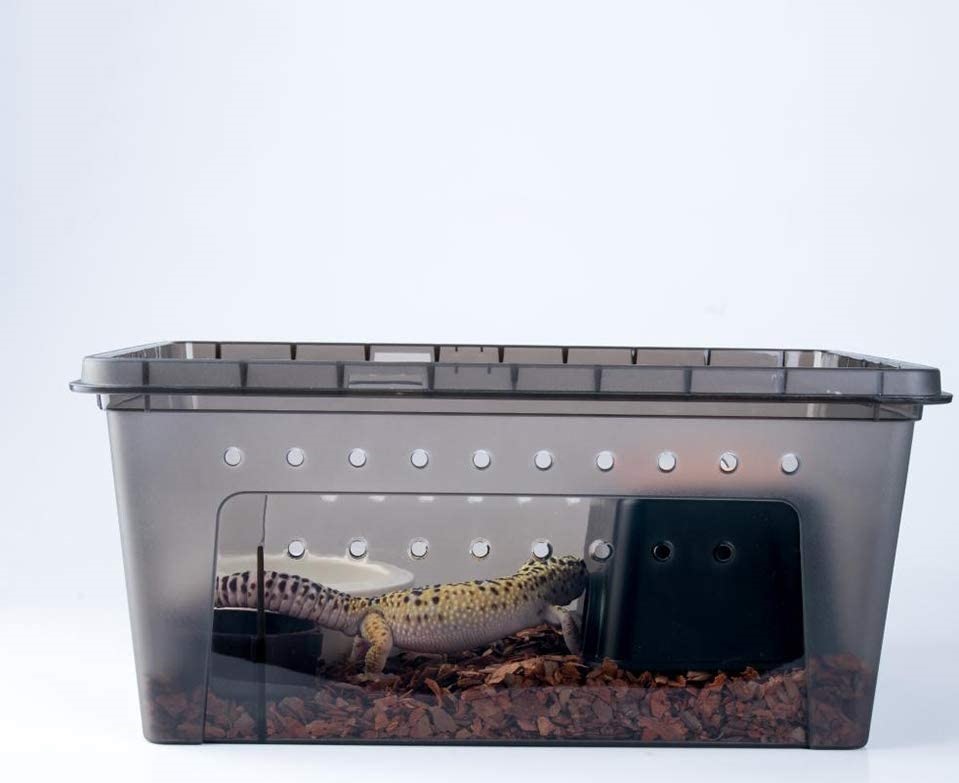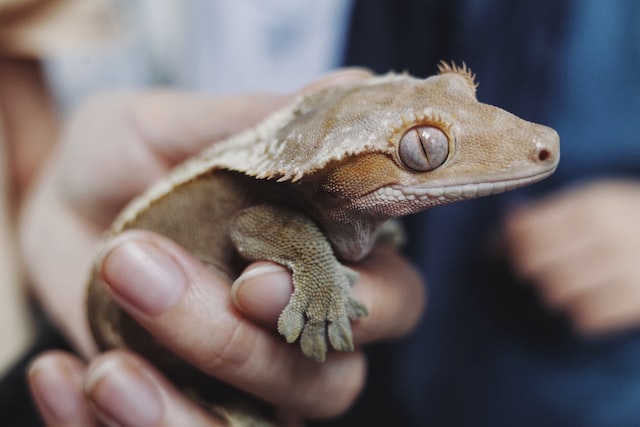If bringing your reptile outside during the cold months worries you—you’re not alone. If you don’t plan ahead and make sure to keep your pet warm, taking your reptile to the clinic or anywhere else you may be travelling to might be traumatic.
I hope this guide will help you with plan a safe journey with your pet reptile.
Temperature and Its Importance
A tiny, fragile reptile, such as a gecko, can become an easy victim to the cold temperatures outside. If exposed to the elements, your reptile can easily catch a cold and become unwell. Also, warming up and already chilly reptile can be challenging. Unlike mammals and birds, reptiles are unable to regulate their body temperatures internally and change their body temperature in adaptation to their environmental temperature. This is why it is important to keep them warm at all times during transportation.
Here is a list of thing you will need to have when transporting a reptile in the cold months:
- A transportation box;
- Blanket or cloth or paper towels for lining;
- Heat source;
- Hiding spot;

Keeping the box warm
To clean up any waste from the journey, add a piece of cloth or some paper towels to the container. This will also help insulate the box and keep it warmer.
Creating a heat source
Depending on the length of the journey, you may DIY your heat source or opt for an electric one.
If only exposed to the cold for less than 30 minutes, you can put a hot water bottle or a latex glove filled with hot water to the travel container.
If your reptile has sharp claws, like a bearded dragon, a latex glove may not be ideal as it can be easily punctured and leak inside the box. Nonetheless, the latex glove can work very well for geckos.
Always check to see whether the water bottle or glove is not so hot that you cannot hold it in your hand without discomfort. If it becomes too hot, your reptile might burn itself. To be on the safe side -wrap it in a towel before placing it in the box.
Keeping the box warm for longer journeys
For longer journeys, you may need to find a longer lasting heat source. Rechargeable electric hand warmers can do the job! These devices can release heat for up to 6 hours (depending on the make and model). Make sure your device is fully changed before making the journey, wrap it in a cloth towel and always place it on the opposite side of the hiding place.
Keep an eye on it during the journey, as it is an electronic device.
Provide a hiding space
Transporting your reptile is a stressful experience. Make sure you provide your pet with a hiding space where it will feel safe. This is especially important for geckos, as they are easily scared. You can grab their favorite hiding space from the tank, or just keep one in the transportation box permanently.
Plan your journey
Travelling by car makes reptile transportation a lot easier. Make sure you have your AC on to keep the car warm and pay attention to the transportation box. It should not be sliding around the back seat. It is best if you let another passenger hold the box (if the size allows it).
If travelling by public transport, always keep the box near you to prevent other people from kicking and tumbling over it by accident. Do not put your transportation box in the luggage compartment.
Travelling with a reptile: dos and don’ts
- Do keep an eye on your reptile throughout the journey
- Do feed your reptile before the journey to help keep it calm
- Don’t put any live food, such as crickets, in your transport box—your reptile will most probably be stressed and will not want to eat. The crickets will additionally irritate your pet.
- Don’t put any water dishes in the transport box as they will most probably spill and make everything wet.
